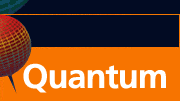CONTACTS
- Coordinator
Diego Dalvit
-
Quantum Lunch Location:
T-Division Conference Room, TA-3,
Building 123, Room 121
 |


Quantum Institute: Visitor Schedule
The Quantum Lunch is regularly held on Thursdays in the Theoretical Division Conference Room, TA-3, Building 123, Room 121.
For more information, contact Diego Dalvit.
June 8 , 2006
12:30 PM
Kevin Henderson,
University of Texas at Austin
Experiments with a Bose-Einstein Condensate in a Quasi-1D Waveguide
Abstract
Two experimental results shall be discussed in this talk: quantum transport of atoms in an optical lattice and a phase space density decay rate of a Bose-Einstein condensate in a driven kicked-rotor optical billiard. There will also be some discussion of macroscopic transport of ultra-cold atoms and quantum reflection.
The first experiment is a study of the quantum transport for atoms confined in a periodic potential. These results include a comparison made of thermal and BEC initial conditions. Here, observation of ballistic transport is made for all values of well depth and initial conditions, and the expansion rates for thermal atoms are shown to be in excellent agreement with a single-particle model. For weak wells (V0/ER < 6), the expansion of the BEC is also in excellent agreement with single-particle theory, using an effective temperature model based on single (non-interacting) particle theory. For deep wells (V0/ER > 6), a crossover is observed to a new regime for the BEC case, indicating the importance of interactions on quantum transport.
The second experiment is a study of the effect of different heating rates of a dilute Bose gas confined in a quasi-1D finite, leaky box. An optical kicked-rotor is used to transfer energy to the atoms while two repulsive optical beams are used to confine the atoms. The average energy of the atoms is localized after a large number of kicks and the system reaches a nonequilibrium steady state. A numerical simulation of the experimental data suggests that the localization is due to energetic atoms leaking over the barrier. Our data also indicates a correlation between collisions and the destruction of the Bose-Einstein condensate fraction and an exponential decay in phase space density.
|


